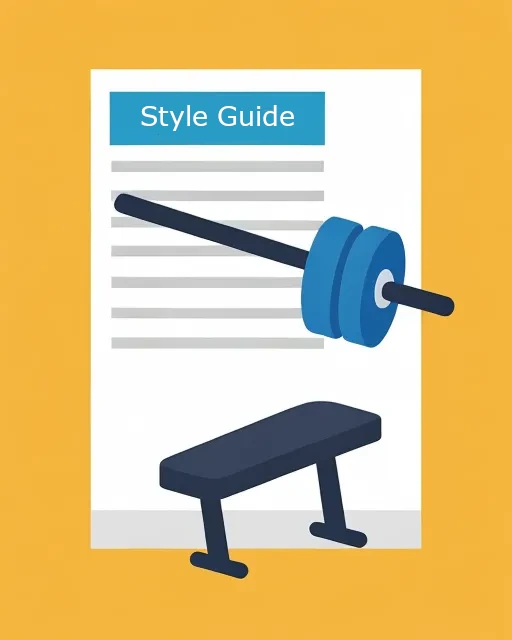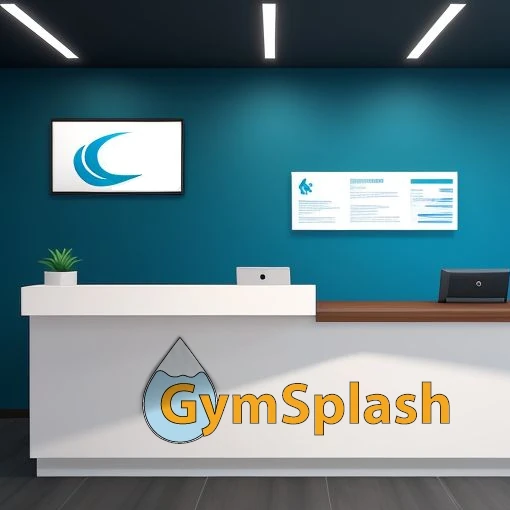If you are in the early stages of opening a fitness facility or even just wondering how to start a gym, coming up with gym marketing ideas to get potential clients interested in your studio may seem like a priority. However, this initial gut reaction to jump right into client acquisition can create a bit of a business pain point for leaders down the road.
While there are some factors always to consider when developing a business plan, understanding your growth goals, gym budget, target audience, and alignment with your facility’s unique points of distinction can be a great starting place. But after that, there can be many paths to travel down. In this blog, we will dive into building gym brand consistency within the various marketing channels and pieces your facility will operate.
Style Guide for Building a Gym Brand
Similar to a business operating manual, a company style guide is a formal document that outlines how some aspects of the business operate. The style guide tends to be a marketing document containing specifics on processes, procedures, or detailed instructions regarding the facility’s marketing and branding efforts.
This marketing-based guide can be a great location to store your logo (or allowed variations), other brand-centric visual elements, brand colors (CMYK, RGB, PMS, Hex, etc.), font types, and even details about your business’s “voice.”
Logos and Your Channels
When working with logos, specifying the sizing and variations allowed is essential. This clarification will help remove confusion and artistic liberties if a third-party designer or employee tries to get too liberal with branding creative. Further, if you have stylized elements that you like to include with branding, it’s also helpful to identify if or when they need (or should) be included.
To exemplify these points, if your gym has a more complex logo that includes your facility’s name along with a designed element, you may consider having a simplified or basic version of the logo that is only the design portion to use on specific portions of your website or marketing materials. However, due to the lack of business name information, you may want to avoid using a simplified version everywhere—this is where specifications and rules surrounding usage can be helpful for staff and contractors later.
Further, if you are working with smaller icons for online profiles that really can’t (or typically won’t be viewed as a larger image), consider using a simple version of a logo or primary element of your logo there. Then, in the header image of the profile or profile text, you can call out the proper name, address, or other relevant information or imagery to tie it all together. This combination can also give a cohesive profile aesthetic, as you won’t have multiple versions of the same logo within the user’s view of the opening splash screen.
Imagery
Much like working with logos, imagery and graphic elements can be a distinct style point to incorporate into your various marketing pieces and social media content. Having a similar style, look, and feel can tie together the brand feeling you are trying to convey.
Consider how you edit your photos, the angles you take them from, and even the primary focus of your shots. If you tend to use empty gym shots, group workout classes, or blurred images with text overlays, document these points and build them into your style guide. Additionally, you shout note filters and image adjustments in the guide, but we will jump into that in the next section covering color.
Last, you can stylize your photos with brand image elements. Shapes, icons, or even mascots can help emphasize your business’s brand presence.
Color and Fonts
Color is a huge factor when building a brand. And as much as we would love to say it’s just simply picking some colors that you think look cool, there is much more of a science behind it. Depending on the primary color you select for your business, it can emotionally affect your audience base. That’s right, not only can the logo shape and design carry weight, but the color you set it to also matters.
Whether you want people to feel warm and welcomed or convey a more serious and stern vibe, selecting a color that helps emphasize that can be another tool to align your brand with that goal emotion. Additionally, establishing secondary colors that work with the same emotional goal but work synergistically with your primary color can significantly benefit your marketing, website, and general aesthetic purposes.
One last point on color involves filters and stylizations of images. Implementing transparent color overlays, color filters, or shapes for color pop can be a great way to subtly introduce your branding to pieces and parts of your marketing efforts. While they can vary in size and intensity, these can go a long way toward helping make your channels feel interconnected as a brand.
Along with color, fonts will be another aspect of your brand you want to nail down. While the list of potential options is seemingly endless (especially if you have a custom font designed specifically for your fitness studio), finding one that is legible, eye-catching, and on-brand for your business goals will be necessary. Conversely, you can lean into the eclectic style (if that’s your thing) and implement various font types throughout; however, if you go this route, remember that your marketing pieces and branding reflect your business.
Note: If you are feeling overwhelmed by these concepts of colors, fonts, and images and you are not sure where to begin, just start with your best efforts to align these points with your goals. Over time, you can make adjustments, try new things, or test different factors. Ultimately, you want to find what works and keep fine-tuning that machine through lots of small experiments and failures.
Voice and Content
Branding is also more than just logos, colors, and pictures; it’s also how you conduct and present yourself. Treating your business like a human entity can help establish voice, themes, and shared content.
When establishing your brand’s voice, you must consider your goals and target audience. Humanizing your brand and giving it a voice aligns with many gym owners’ goals, and it’s very common that customer bases respond more positively to a human-feeling brand (vs. a cold corporate machine).
So, how do you figure out how to build your gym brand’s voice? Practice removing yourself. Many times, owners assume they are the brand and will use words like “I” or “me” frequently in their text, posts, or communications. While this can work for some facilities that are built around a key person (maybe someone influential in a particular space), it can often backfire and make it harder to connect with or grow the brand.
By making the voice more universal with “we” and “us,” you also invoke a general feeling of team and community—something larger than just an individual. For many fitness businesses, community is a critical aspect of pushing for growth and retention.
In addition to how you talk and write on your various channels, what you share is also important. Typically, following what engages with your target audience and drives goal completions/conversions is ideal for each channel and is a savvy tactic as each can be particular. That said, having topical consistency throughout can help emphasize your brand. For instance, if you run a highly specialized training facility focusing on in-depth knowledge, sharing more insightful content can help promote thought leadership and reinforce your brand’s qualifications and aptitude.
Making A Splash
Whether you are starting a gym or already running a fitness facility/online coaching business, having a set standard for how your brand will operate, look, and feel is critical to running a consistent message among the various channels you will be marketing within. Logos, colors, fonts, voice, and content all play a role in the final product of building a gym brand and the feelings, emotions, and vibes it portrays to your target audience. By documenting all these factors in a gym brand style guide, you can ensure that you have an easy-to-access standard to hold other staff or third-party members to when working within your channels.



